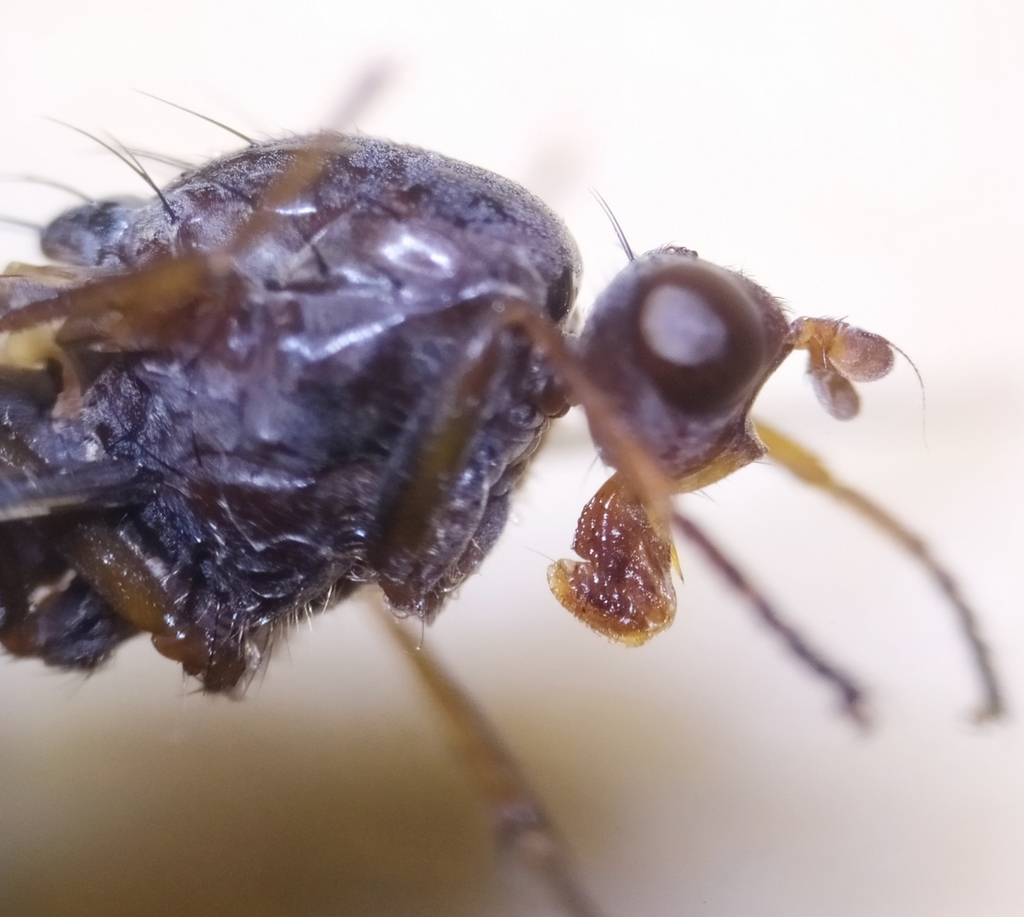Thread subject: Diptera.info :: Scathophagidae -> no, Dryomyzidae (new photo)
Posted by Carnifex on 06-02-2020 21:11
#1
Hi, I need help with ID here. Vienna, early Feb in a vinegar trap




Edited by Carnifex on 25-06-2023 09:01
Posted by John Carr on 06-02-2020 22:48
#2
An acalyptrate fly, possibly superfamily Sciomyzoidea.
Posted by Paul Beuk on 06-02-2020 22:53
#3
Dryomyzidae
Posted by Carnifex on 07-02-2020 00:34
#4
Thanks guys! I am struggling with the term 'setulose' - does it mean 'hairy'? Because with R1 not setulose, prescutellar ac and strong postgenal bristles I reach
Pseudoneuroctena senilis. But I am hesitant, as this would be a new species for Austria, apparently. So rather a
Dryomyza (flaveola)?


Edited by Carnifex on 25-06-2023 09:01
Posted by Paul Beuk on 07-02-2020 10:21
#5
The last wing image shows the tip of the subcosta, not of R
1 so I dare not say with any certainty whether the tip of R
1 is setulose or not (there should be a few in
senilis). Setulosa means with small setae.
Posted by Carnifex on 07-02-2020 10:30
#6
I intentionally took the frame of R1 together with subcosta, because there the small hairs on R1 could be seen best. I was not going for the tip of R1 because in the key it says 'Vein R1 setose along length'.
So now I know that these small hairs are not the feature to look at.
I won't have time to provide more photos until next week. Thanks for helping out so far!
Posted by Zeegers on 07-02-2020 11:10
#7
R1 looks setulose to me, but the setulae are broken off. You can still see the pores of implantation (I think)
Is it from a malaise trap or so ?
Theo
Posted by Zeegers on 07-02-2020 11:11
#8
Sorry, I just red vinegar trap. That might explain the poor condition
Edited by Zeegers on 07-02-2020 11:11
Posted by Carnifex on 07-02-2020 11:24
#9
Yes Theo, in total I caught 10 individuals.
Maybe I find one with intact setulae, but I agree that on the 'whole wing' image there are pores visible where the setae broke off.
So a
Dryomyza species.
Posted by Paul Beuk on 07-02-2020 12:35
#10
Carnifex wrote:
Yes Theo, in total I caught 10 individuals.
Maybe pop one specimen in the mail? ;)
Posted by Carnifex on 14-02-2020 21:38
#11
Here we have the prove: bristles on R1. So does it make it
D. anilis?

Edited by Carnifex on 25-06-2023 09:04
Posted by Paul Beuk on 18-02-2020 08:29
#12
D. anlis should have them along the whole length of R
1. The picture only shows support for
Pseudoneuroctena senilis, I think.
Posted by Carnifex on 18-02-2020 09:30
#13
Thanks, Paul. I like that conclusion.
Do you want to get some specimens?
Posted by Ectemnius on 18-02-2020 09:58
#14
Hi Carnifex,
Could I get a few (male) specimens as well? Then I can compare them with my Mongolian material I collected last august...
Kind regards,
Ectemnius
Posted by Paul Beuk on 18-02-2020 12:26
#15
Carnifex wrote:
Thanks, Paul. I like that conclusion.
Do you want to get some specimens?
Certainly, thx. :)










